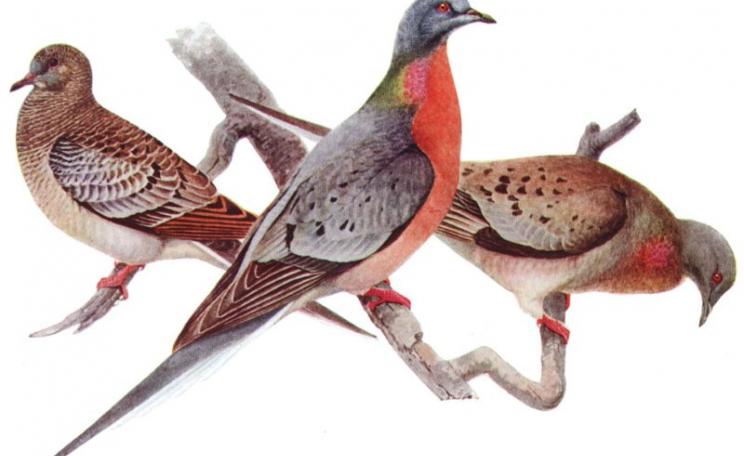To the dismay of many of my friends, I’m not unalterably opposed to vivisection. In fact, I’d wholeheartedly support it were vivisectors to make one minor administrative change. It would be that scientists perform the experiments not on nonhumans but on themselves and their colleagues.
Scientists keep telling us how beneficial the experiments are for science with a capital ‘s’, progress with a capital ‘p’ and, of course, man with a capital ‘m’. If the experiments really are necessary with a capital ‘n’, the scientists should be willing to make this sacrifice (with a small ‘s’) for the greater good. In any case, according to no other than Lord Sainsbury, minister for innovation and science, advocate of genetic engineering and owner of a large supermarket chain, strict regulations ensure that experiments generally cause no more than ‘moderate’ suffering. If this is actually true, scientists shouldn’t object too much to throwing their hats into this ring.
Now, I’m sure you can spot the problem: there are too many important experiments for the number of vivisectors. In Europe alone an animal is killed in a laboratory every three seconds. In Britain it’s one every 12 seconds, in Japan one every other second and in the USA one per second. I’m not sure even full-fee scholarships and high salaries will suffice to bring in enough scientists to fill this bill. But that’s okay, because every problem carries within it the seed of its own solution.
The solution comes through the words of Sainsbury, or rather his existence: add another category of those eligible to be vivisected. This would, of course, be those politicians who speak or vote in favour of experimenting on live animals. Given the importance of these experiments to everything from the economy and national security to shiny, clean hair and new cosmetics, I think the politicians will be glad to serve the public in this manner. Unfortunately, this won’t solve the problem entirely; I just don’t think we have enough politicians (and I’ll bet you never thought you’d hear anyone say that).
At first I toyed with the notion of putting vivisectors’ families on the short list, but decided to keep them in reserve in case they’re needed to provide ‘spare parts’, as the xenotransplantation literature so elegantly puts it, for those humans rich enough to afford their own personal organ donors. The use of vivisectors’ families should eradicate the technical and moral problems caused by the current planned use of pigs and should also bring in some extra cash for the corporations that hire the vivisectors (and that’s always been the real point, hasn’t it?); some estimates put the market for pig organs to transplant into humans at $6 billion per year, just in the USA.
But we still have the problem of numbers, don’t we? Not enough vivisectionists, not enough politicians. Naturally, CEOs of companies that profit from vivisection need to go on the list, and in these desperate straits – how could we possibly live without the draize eye-tests – I think we’ll just need to add everyone who works for those companies, too. Certainly the shareholders. Especially the shareholders.
I suspect, however, that we still won’t have enough; our culture’s appetite for subjects on which to inflict ‘moderate’ suffering seems insatiable. We feel the need to force-feed agrochemicals and household products to dogs through tubes directly into their stomachs and to transplant the hearts and kidneys of pigs into the necks of baboons. We immobilise monkeys, lizards, cats, dogs, then take off the tops of their heads. We break the necks of baboons. We force macaques to become addicted to cocaine, and give them electric shocks if they will not use.
We create super-viruses that kill everyone they contact. We cut out portions of the brains of marmosets and leave them as stupid as the experimenters themselves. We cut off the heads of live animals using scissors, then study their brains. We put live animals in freezers and let them try to claw their way out. We teach chimps sign language, then put them in cages the size of cupboards; when they signal that they want to get out, we ignore them and inject them with pesticides. We separate monkeys from their mothers, infect them with HIV, then put painful coils in their eyes to track where they look. There are simply not enough CEOs and shareholders. I’ll bet you never thought you’d hear someone say that, either.
But I have a plan. Make vivisection duty mandatory for every human who supports animal testing. We are, after all, animals. It will be just like jury duty. You get a note from the local authorities advising you that your turn has come, and you are to report next Tuesday. You call the evening before to see if the experiment has been cancelled. It hasn’t, but you learn they only want males.
You are, so you show up the next day. You learn you’ll be testing Viagra. Good, you say. You don’t need it (you hasten to add) but can it really hurt? You soon find out. You take the drug. Instead of cutting off your penis, as happened in experiments on beagles, rabbits, rats, mice and monkeys, the vivisectors (who at the very least have no testicles, otherwise they would surely refuse each time they were told to torture another) cut open your penis and insert an electrode into a branch of the pelvic nerve. They pass a charge through for a minute at a time, causing erections. They then measure the blood pressure of the erection. Their hope is that Viagra will help maintain the erection. It seems to do that, but you and everyone else concerned already knew that from many previous tests. ‘Can I go home now?’ you ask, your opened penis smarting. ‘Oh, sorry’, they say. ‘We forgot to tell you: afterwards all subjects are sacrificed.’ You’re not too happy about that. But that’s okay, you can say as they put the final needle in your arm. Animal experimentation is extremely important, the suffering only moderate.
Derrick Jensen is the author of A Language Older than Words and The Culture of Make Believe.
----
WHAT’S IN A NAME?
“moderate" according to xyz dictionary
adj. Being within reasonable limits; not excessive or extreme, not violent or subject to extremes; mild or calm; temperate
moderate according to Scientific Procedures Act (1986)
Toxicity tests and many surgical procedures. Protocols that have the potential to cause greater suffering but include controls which minimise severity, or terminate the protocol before the animal shows more than moderate adverse effects, may also be classed within the moderate severity limit.
In 2001, Home Office statistics revealed that 55 per cent of licensed projects of animal experimentation in the UK were classified as of ‘moderate’ severity (see above). Which means that last year 1,412,242 animals suffered moderately in British laboratories.
Put another way, just over half of the 1,655,766 mice, 489,613 rats, 47,387 guinea pigs, 7,124 hamsters, 2,957 gerbils, 3,053 ‘other rodents’, 23,356 rabbits, 731 cats, 5,460 beagles, 94 ‘other dogs’, 1,039 ferrets, 949 ‘other carnivores’, 649 ‘horses, donkeys and cross-bred equids’, 5,401 pigs, 312 goats, 10,664 sheep, 2,910 cattle, 67 deer, 10 ‘other ungulates’, 1,123 marmoset and tamarin monkeys, 2,219 macaque monkeys, 776 ‘other mammals’, 110,330 domestic fowl, 3,780 turkeys, 1,488 quails, 10,007 ‘other birds’, 341 reptiles, 9,648 amphibians and 170,459 fish.
But what happened to them? Well, 71,261 animals were killed in toxicity (poisoning) tests; 135,839 were subjected to poisoning tests for pollutants, agrochemicals, industrial chemicals, household products, food additives and other food stuffs; 246,844 were experimented upon, having been bred with ‘harmful genetic defects’; 25,043 suffered injections into the brain; 7,225 endured radiation experiments and 363 were subjected to ‘thermal injury’, or ‘burnt’, in normal parlance. Oh, and in 59 per cent of all the experiments, no anaesthetic was used whatsoever.
But didn’t most of these animals suffer only moderately in the end? You decide. According to leaked Home Office documents, a programme of xenotransplantation (transplantation of organs from one species to another) undertaken by biotech company Imutran came under the category ‘moderate’.
During the experiments, genetically modified piglet hearts were transplanted into the necks of baboons that had been caught in the wild. The documents state that a baboon with a transplanted pig heart was later seen clutching the transplant, which was ‘swollen red’ and ‘seeping yellow fluid’ for most of the last days of its life. Elsewhere in the report one can read of a ‘cervical abscess eroding the internal jugular vein leading to haemorrhage and [the] collapse of the animal’. Or how one baboon ‘collapsed and died because of bronchopneumonia’. Or how five animals ‘had to be killed because of gastrointestinal toxicity, resulting in severe diarrhoea’. Makes you wonder how they classify ‘severe’.
Or does it? When deciding whether this, or any other experiment should be deemed ‘unclassified’, ‘mild’, ‘moderate’ or ‘severe’ a team of government scientists apply a cost/benefit analysis, where the ‘cost’ to the animals is weighed against the ‘benefit’ to science. However, of 22 scientists on the team, 17 were found to have held licences to carry out experiments on animals in the past, casting a shadow of doubt over their impartiality.
This article first appeared in the Ecologist February 2003







